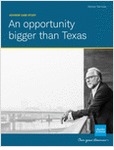What You Need to Know
- EBSA's budget has remained flat from 2013 to 2021.
- During this time the agency's responsibilities have swelled under the Secure and Secure 2.0 acts.
- GAO provided recommendations for the agency to adapt to its limited budget more systematically.
The budget of the Labor Department’s Employee Benefits Security Administration has remained generally flat while its oversight responsibilities have grown following the passage of bipartisan legislation such as the Secure Act, Secure 2.0 Act and pandemic relief, according to a just-released report by the Government Accountability Office.
EBSA’s budget has remained flat from 2013 to 2021, “resulting in a substantial decline in staff available to implement these laws,” Rep. Bobby Scott, D-Va., ranking member on the House Education and Workforce Committee, said Thursday of the new GAO report.
For the agency, the Setting Every Community Up for Retirement Enhancement Act has “created responsibilities regarding lifetime income illustrations, special provisions regarding annuity safe harbors, as well as new regulatory obligations and a registration requirement for newly created pooled employer plans,” the report says in a footnote.
Secure 2.0 provided no additional funding to the agency while putting it in charge of a number of sweeping changes tied to increasing retirement savings and improving how retirement plans are run, according to the GAO.
The report, commissioned by Scott, “underscores the consequences of a decade of underfunding that has left the EBSA without the resources it needs to fulfill its mission to protect the employer-sponsored retirement and health benefits of millions of Americans,” Scott said.
House Republicans’ “extreme government funding bill proposes to cut $38 million from EBSA’s budget,” Scott said.
Specifically, Scott continued, “the dramatic decline in EBSA’s inflation-adjusted budget has reduced the number of its staff by over 18% from 2013 to 2021.”
GAO examined how EBSA’s resources and its oversight responsibilities have changed over time, and the extent to which EBSA has developed a plan to strategically manage resources.








 November 16, 2023 at 02:35 PM
November 16, 2023 at 02:35 PM












 Copyright © 2024 ALM Global, LLC. All Rights Reserved.
Copyright © 2024 ALM Global, LLC. All Rights Reserved.